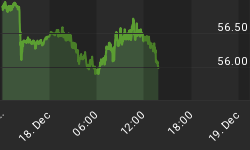September 9, 2008
Today, we will look at what the levels of New Highs and New Lows are saying relative to:
Which stock group has the advantage right now: Stocks below or above $10? ... and, Who is doing more selling ... large or small investors?
Investors recognize the value of looking at which sectors have the advantage, but very few ever look for the advantage relative to New Highs and New Lows trending.
Now, we will explore one of those advantages with you ...
Which stock group has the advantage right now: Stocks below or above $10?
A quick look at the chart below shows yesterday's New Highs and New Lows by time period relative to whether a stock was priced above or below $10 in value. Here are the initial results ...
New Lows outpaced the number of New Highs in all categories by a factor of 1.9 times to 3.6 times. (See the second chart.) (The categories are 20, 65, and 100 day New Highs/New Lows, and a 52 week period.)
Given that, yesterday's results are saying that the $10+ stocks were at a disadvantage yesterday across all groups. That this is still a bear market condition.
But ... is there a flaw in the data the way we charted it? The answer is yes as you will see below because the data is not "equalized". The data needs to be equalized because there are 1.83 times more stocks in the over $10 category compared to the under $10 category. ... see the next charts.

These were the factor numbers relative to how much New Lows exceeded New Highs on the above chart. (2.0 is 200%.) These factors are for stocks above $10 compared to stocks below $10.00.

As mentioned ... there was a flaw in the above data. The reason was that there are more above $10 stocks than below $10 stocks by a factor of 1.83. So for an accurate picture, the under $10 stocks have to be equalized to the base size of the over $10 stocks.
So we "equalized" the data in the next chart.
There are 3 columns in this chart. The difference is that the middle chart represents the projected number of stocks below $10 that there "would have been" if their original universe size was the same. In essence, the dark blue and red columns are equalized to show what the numbers would have looked like if they both had the same base sizes.
The results are similar but not quite.
First, it is still true that there were more $10 stocks making New Lows rather than New Highs.
But, the New Lows really only outpaced the number of New Highs in all categories by a factor of 1.09 times to 1.94 times ... NOT 1.9 times to 3.6 times. And, ... see the next chart ...

Below is the chart "by group" for factor numbers relative to how much New Lows exceeded New Highs on the above chart. (1.09 is 109%.) These factors are for stocks above $10 compared to stocks below $10.00.
What becomes apparent, is that all stocks (above and below $10.), were almost equal in the 20 Day and 65 Day New Highs/New Lows categories. But, as mentioned, all categories still had New Lows outnumbering New Highs.
Conclusion: What this says is that the least risky stocks are those making 20 and 65 day New Highs. These have less risk, and not more safety because all groups have overall increased risk over normal rally conditions.
In essence, the numbers still say this is a bear market scenario and that the Freddie/Fannie bailout has done nothing to change that condition.
Smaller investors focus more on stocks under $10, and larger investors concentrate on stocks over $10. So, the additional message this is sending is that "there is more selling and fear among larger investors, and that the smaller investor is too hopeful or aggressively brave right now".
















